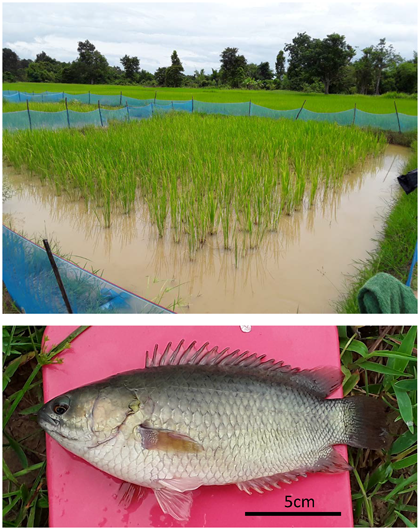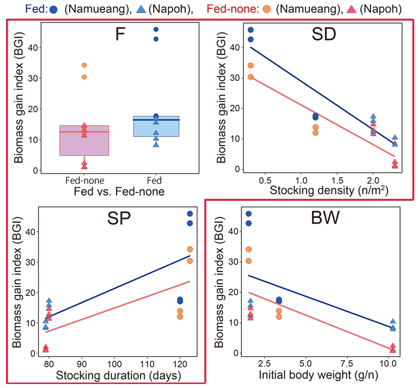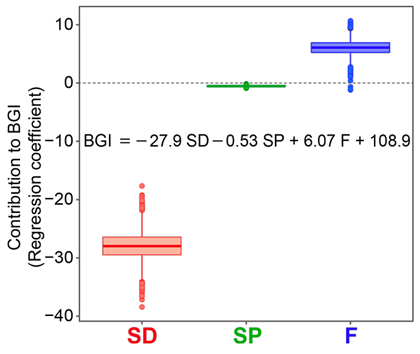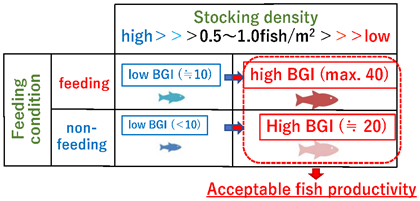Climbing perch aquaculture is realizable in rice paddies under non-feeding conditions by rearing at low stocking densities
Description
In Laos, national food demand has been increasing due to population growth, and animal protein deficiency among residents of mountainous rural areas is an important national concern. To improve this situation, fish aquaculture has been promoted but current major targets for aquaculture, e.g., the Nile tilapia and carps, are introduced species and further development of their aquaculture may cause great risks to biodiversity conservation in the area. In addition, the residents in such rural areas are economically deprived and cannot afford to build specific aquaculture infrastructures, e.g., culture cages and ponds. Therefore, we examined the feasibility of fish culture in a rice paddy (rice-fish culture) using a Laotian indigenous fish, the climbing perch (Anabas testudineus, Fig. 1), without investing in specific infrastructures, and we analyzed/evaluated several factors relevant to fish productivity in a rice-fish culture system.
Through four experimental culture trials in Nameuang and Napoh villages during 2013-2016, feeding condition (feeding or non-feeding), stocking density of fingerlings (fish/m2), stocking period (days) and fish size at stocking (g/fish) were analyzed as potential contributory factors to the BGI (biomass gain index = total weight of fish at stocking / total weight of fish at harvest). We conducted linear regression analyses using all the combinations of the above four parameters. Feeding condition (F), stocking density (SD), and stocking period (SP) were eventually selected as contributory factors, while fish size at stocking (BW) was excluded (Fig. 2). Thereafter, we evaluated the contributory effects of each parameter by the regression coefficients of the model as BGI =-27.9·SD-0.53·SP+6.07·F+108.9 (R2 = 0.96) and found that stocking density was the most important contributory factor and that high BGI can be expected if reared at a low stocking density even under non-feeding condition (Fig. 3). Feeding condition was revealed to be a secondary contributory factor, with better BGI expectable under feeding condition than non-feeding condition. Stocking period’s contribution to the BGI, on the other hand, was limited compared to the above two factors (Fig. 3). Based on the above analyses, high BGI (BGI ca. 40, or 40kg expectable harvest weight over 1kg fingerling weight at stocking) is the realizable fish productivity under feeding condition for the rice-fish (climbing perch) culture system, even as acceptable BGI (BGI ca. 20) is still expectable even under non-feeding condition if reared at a low stocking density (< 1 fish/m2) (Fig. 4).
Assuming that rice-fish culture can be extended across the country, we have estimated ca. 84,000 ha of full-time ponded rice paddies that may be utilized to produce ca. 21,000~42,000t of fish by rice-fish culture. However, the infrastructures and the number of technical staffs for aquacultural fingerling production are largely insufficient, and obtaining the required quantity/supply of fingerlings is currently not possible in Laos. Prompt enhancements are thus necessary to overcome these constraints.
Figure, table
-
Fig. 1. Rice paddy for fish culture (top) and the harvested climbing perch (bottom)
-
Fig. 2. Potential factors relevant to fish productivity (BGI) in a rice paddy.
[F: feeding or non-feeding, SD: stocking density of fingerlings, SP: stocking period, BW: weight of fingerling at stocking. F, SD & SP were selected as influential parameters by linear regression analyses, while BW was not selected] -
Fig. 3. Evaluation of the contribution of selected parameters
[stocking density (SD), stocking period (SP), and feeding condition (F)] to fish productivity (BGI) -
Fig. 4. Schematic image of the effects of stocking density and feeding condition as contributory factors to fish productivity (BGI)
- Affiliation
-
Japan International Research Center for Agricultural Sciences Fisheries Division
- Research project
- Program name
- Term of research
-
FY2018(FY2016-FY2020)
- Responsible researcher
-
Morioka Shinsuke ( Fisheries Division )
KAKEN Researcher No.: 40455259Kawamura Kensuke ( Social Sciences Division )
Vongvichith Bounsong ( Living Aquatic Resources Research Center, Lao PDR )
- ほか
- Publication, etc.
-
https://doi.org/10.6090/jarq.52.359
Vongvichith B et al. (2018) JARQ, 52(4):359–366
- Japanese PDF
-
A4566.18 KB
A3296.37 KB
- English PDF
-
A4402.58 KB
A3243.74 KB
- Poster PDF
-
2018_C03_poster.pdf478.5 KB




